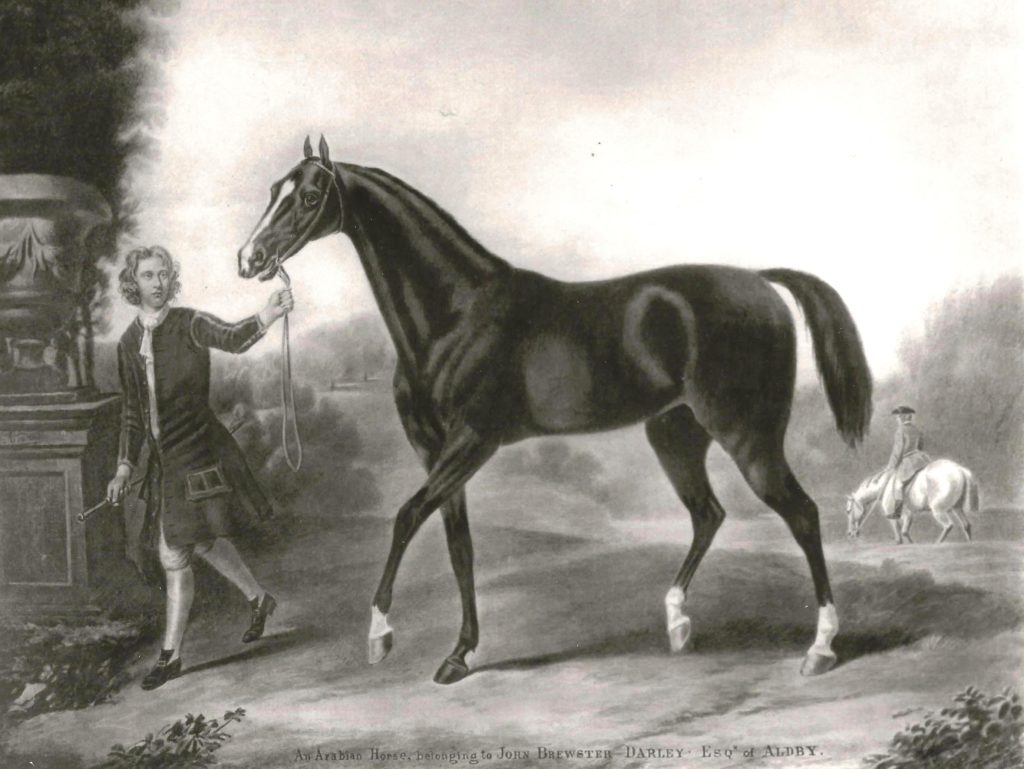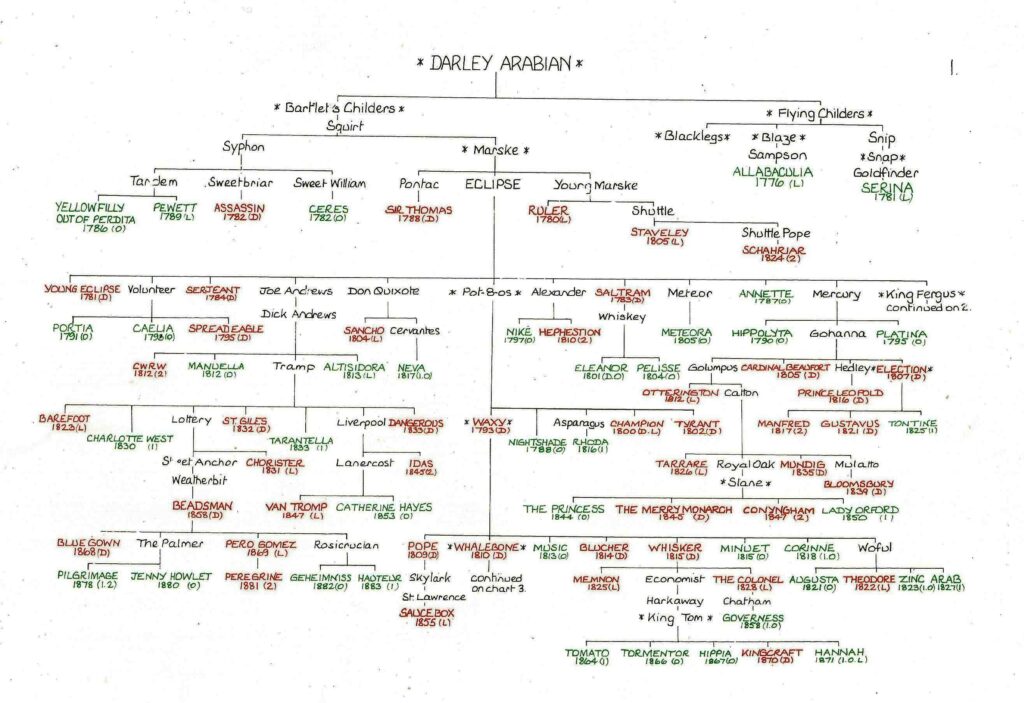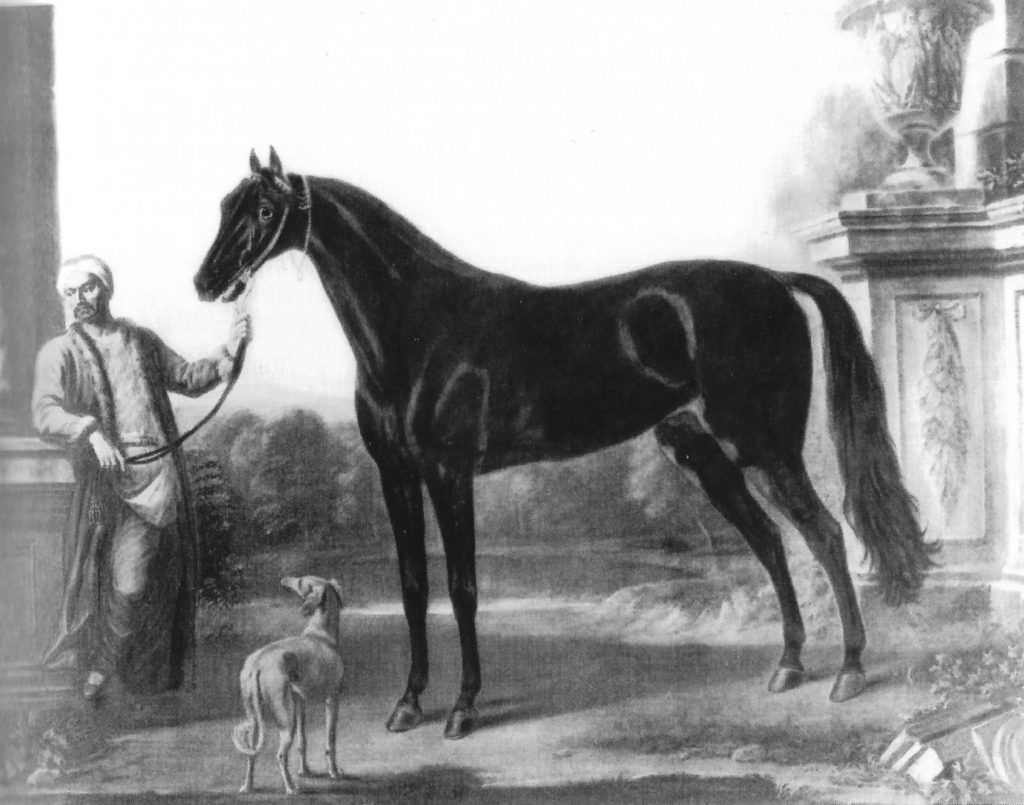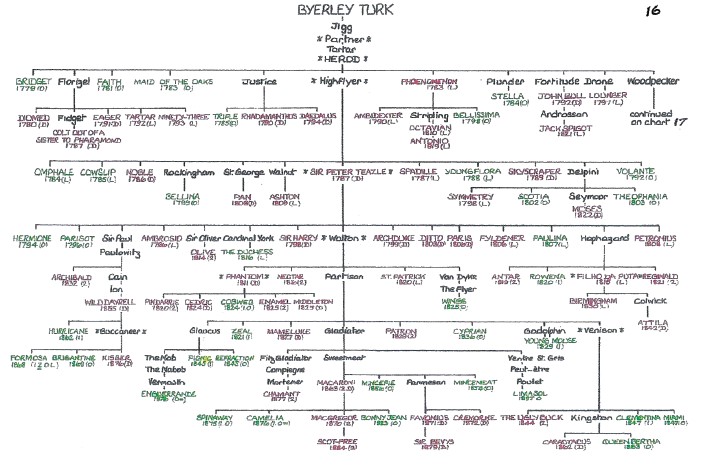The Godolphin Arabian & his descendants
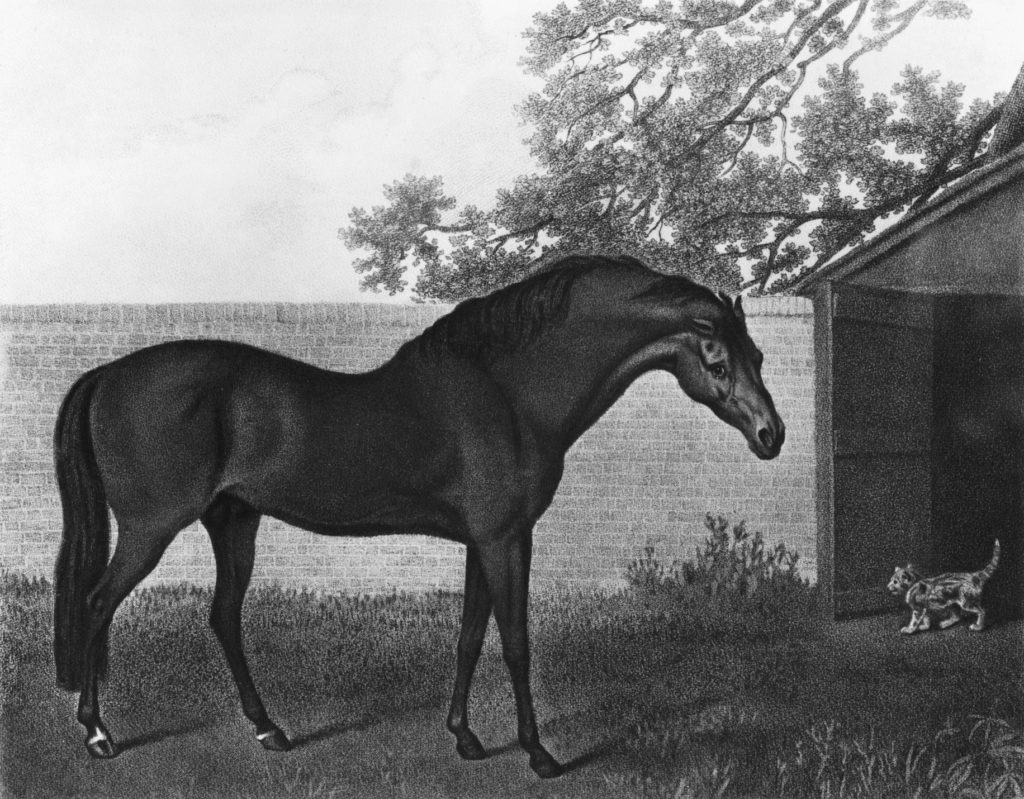
Registered first as an Arabian in the General Stud-Book 1791, and Pick, 1803. Volume I General Stud Book 1808 (page 516) states:
“That he was a genuine Arabian, his excellence as a Stallion is deemed a sufficient proof.”
THE Godolphin Arabian was foaled in the Yemen in 1724 (from Jilfan blood). A brown bay colt, with a little white on his off hind heel, and standing 14.3 hands high, he was exported via Syria to Tunis, as one of four horses to be presented by the Bey of Tunis to the King of France.Three of these were taken to the Brittany forests and turned out to improve the local stock. The fourth horse, the Godolphin Arabian, is popularly believed to have drawn a cart through the streets of Paris, where the Englishman, Edward Coke, is said to have purchased the six-year-old for £3. However, another source relates that Coke acquired the colt, via the French Court, through the Duke of Lorraine. Whichever version is true, Coke sent the horse to his estate at Longford Hall in Derbyshire.
When Edward Coke died in August 1733, aged only 32, he bequeathed his bloodstock to Roger Williams, the proprietor of the St James’s Coffee House in London, who also acted as a bloodstock agent. He then sold the Arabian, believed at the time to be named Shami, to Francis, 2nd Earl of Godolphin; the horse, thereafter, was known as the Godolphin Arabian.
Of the eye-witness accounts that survive, Vicomte de Manty, having seen the Arabian in France, described him as having “beautiful conformation, exquisitely proportioned with large hocks, well let down, with legs of iron…whose only flaw was being headstrong…his quarters broad in spite of being half starved, tail carried in true Arabian style”. His poor condition, referred to at the time, may have been due to his voyage from Tunis.
Later, in England, the well regarded author and veterinary surgeon William Osmer Wrote: ” There never was a horse..so well entitled to get racers as the Godolphin Arabian .. his shoulders were deeper, and lay farther into his back, than those of any horse yet seen. Behind the shoulders, there was but a very small space ere the muscles of his loins rose exceedingly high, broad, and expanded, which were inserted into his quarters with greater strength and power than in any horse…yet seen.”
There is no record of the Godolphin Arabian having ever raced; neither are there any details of his pedigree. At stud, however, he was an outstanding success, and, despite only siring about 80 foals in a stud career lasting 22 years, he was Champion Sire three times (1738, 1745 and 1747). Amongst his mates was the well-bred Roxana (born 1718), by the Champion Sire, Bald Galloway out of a sister to Chanter, who produced only three foals, two of them to the Godolphin Arabian: Lath (b.c.1732), who was unbeaten, and thought to be the best horse seen at Newmarket since Flying Childers (1715); and Cade (b.c. 1734), winner of a King’s Plate at Newmarket. Sadly, Roxana died two weeks after foaling Cade, who had to be reared with cow’s milk.
Later, three sons of the Godolphin Arabian dominated the sires’ list for almost 20 years: Cade, was Champion Sire five times; Regulus (b.c. 1739), eight times and Blank (b.c. 1740), three times. However, it was Cade’s son Matchem (b.c. 1748) who perpetuated the sire-line, winning eight races and being Champion Sire three consecutive years from 1772.
The Godolphin Arabian died at Gog Magog, near Cambridge, in December 1753, aged 29 years. He was given a wake with cakes and ale, and solemnly buried under a gateway at the stable. A stone slab marked his gravesite, which still exists today, within the Wandlebury Ring.
The lasting influence of the Godolphin Arabian in the pedigrees of the following generations can be gauged by the fact that, 50 years after his death, every one of the first 76 British Classic winners had at least one strain of him in their pedigree. Also, all but three of the 115 mares born in or before 1803 who went on to become dams of Classic winners, had also inherited the Godolphin’s genes.
See below the lineage chart of the Godolphin Arabian. Colts are in Red, fillies in Green. Classic winners with date of victory in CAPS.
Key to races won: 2000 Guineas (2); 1000 Guineas (1); Derby (D); Oaks (O); St Leger (L); King George VI & Queen Elizabeth Stakes (K); Prix de l’Arc de Triomphe (A); while stars either side indicate Champion Sire.
View landscape on mobiles
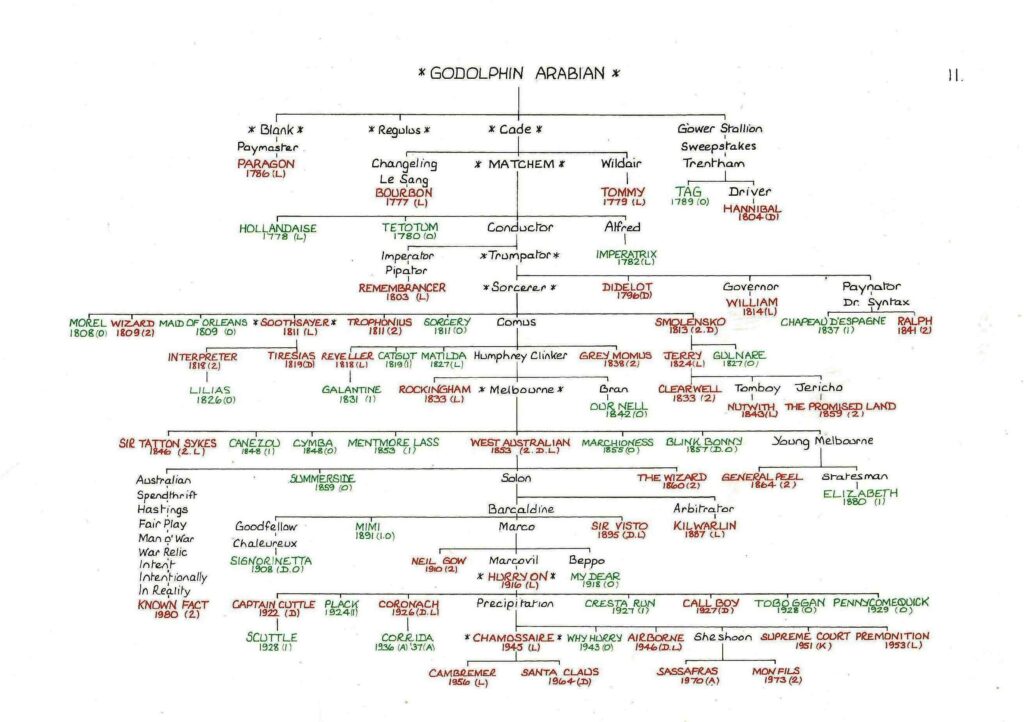
The above chart is taken from – The Classics Chart 1776-2020, showing the male lineage of every Classic winner, Ascot’s King George, the Prix de l’Arc de Triomphe and all the Champion Sires of G.B & Ireland.
Printed in three colours on 170 GSM bright white paper, measuring 74 cm x 59 cm or 29″ x 23 “, the chart shows every winner with dates won: colts in Red, fillies in Green and Champion Sires with asterisks either side of their name.
The Chart encompasses 20 smaller charts photo-reduced, so with the accompanying Pdf file magnifying up to x 10, is highly suitable for research.
Sold as a Limited Edition of 60 copies, numbered & signed together with a magnifying Pdf file for £60.
SEE MICHAEL’S BOOKS & CHARTS FOR SALE ON THE TOP MENU.
